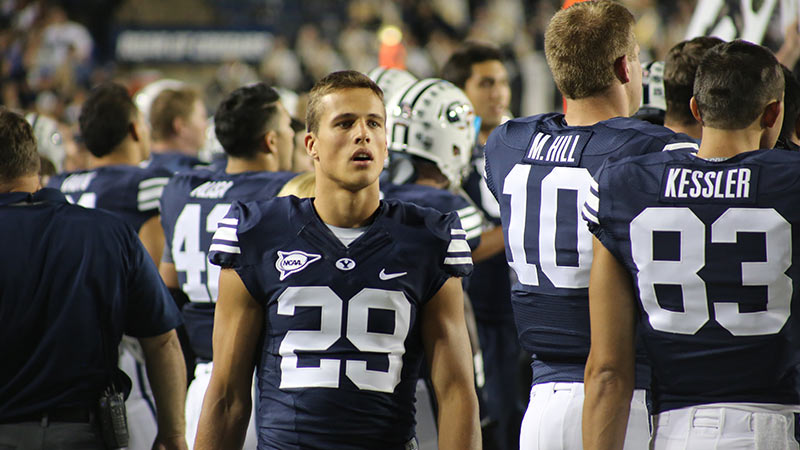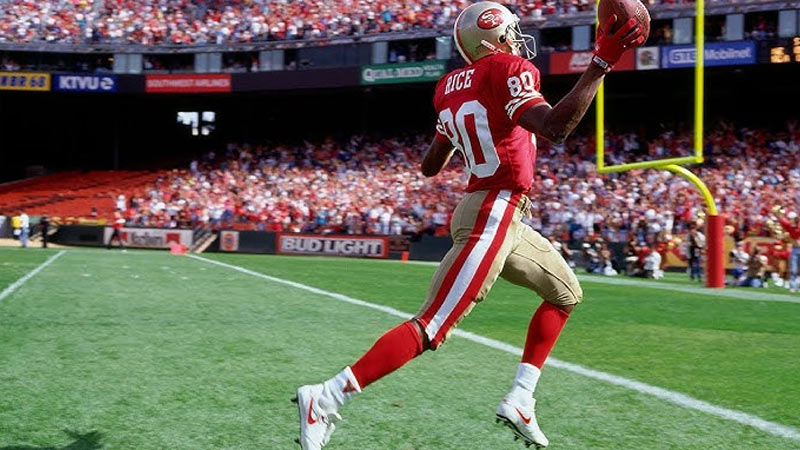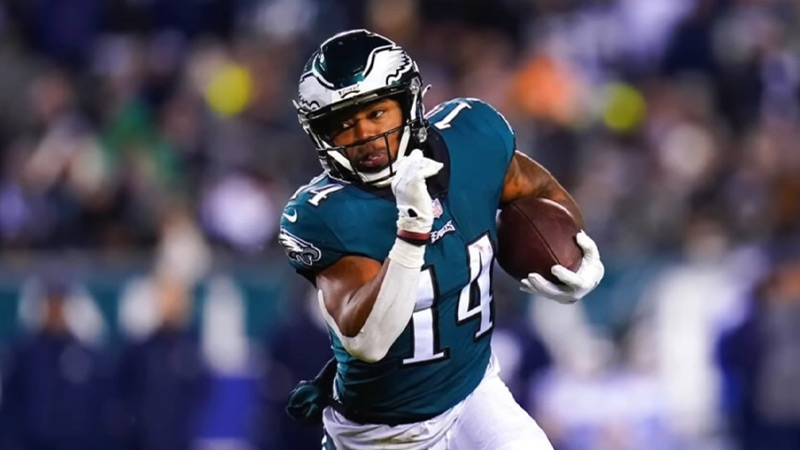In the intricate world of American football terminology, where abbreviations and acronyms abound, “HB” is a concise yet significant designation.
Standing for “Halfback,” HB signifies a pivotal position within the sport’s offensive landscape. This designation encompasses a player whose multifaceted role is central to the team’s success.
Halfbacks are known for their exceptional agility, speed, and versatility, adeptly maneuvering the football through the opposition’s defenses. They are more than just ball carriers; they serve as protectors of the quarterback, reliable pass-catchers, and even kick returners.
In this exploration, we delve into the nuanced role of the HB, unraveling the intricacies that make it an indispensable component of American football’s dynamic playbook.
What Does HB Mean in American Football?
In American football, “HB” stands for “Halfback.” The halfback is a position within the offensive backfield and is also commonly referred to as the “running back” or “tailback.”
This position plays a critical role in the offense and is known for its versatility and ability to impact the game in several ways.
Here’s a closer look at what the term “HB” or “Halfback” means in American football:
Running the Ball
The primary responsibility of the halfback is to carry the football and advance it down the field. They are often handed the ball by the quarterback or receive pitches from the quarterback or fullback.
Halfbacks must possess excellent speed, agility, vision, and ball-carrying skills to navigate through the defense and gain yardage on running plays.
Pass Protection
In addition to running the ball, halfbacks are also responsible for pass protection. They must block or pick up blitzing defenders to give the quarterback time to pass the ball. This requires both the ability to read the defense and the physicality to engage in blocking.
Receiving
Many halfbacks are proficient pass-catchers. They are frequently used as receivers in passing plays, either as check-down options for the quarterback or as targets on designed pass routes. A skilled halfback can be a valuable asset in the passing game.
Kick Returning
Some halfbacks also serve as kick returners, responsible for fielding kickoffs and punts and attempting to return them for positive yardage. Their agility and speed make them well-suited for this role.
Versatility
Halfbacks are often called upon to adapt to various offensive strategies and formations. They can line up in different positions in the backfield and may be used in motion before the snap to confuse the defense.
Specializations
Over the years, specific variations of the halfback position have emerged, such as the “scatback” (smaller and quicker, often used in passing situations) and the “power back” (larger and more physical, used in short-yardage and goal-line situations).
Is a Halfback a Running Back?

Yes, a halfback is a type of running back in American football. The terms “halfback” and “running back” are often used interchangeably, but there are reasons for this dual nomenclature:
Historical Evolution
The term “halfback” harks back to the early days of American football when teams used a formation known as the “single-wing formation.”
In this formation, the halfback was positioned halfway between the fullback and the quarterback. Over time, as offensive strategies and formations evolved, the halfback retained its role as a primary ball carrier and was referred to as a “running back.”
Versatility of the Position
The position of a halfback, or running back, is highly versatile. These players run with the ball, block for the quarterback, catch passes, and even return kicks. As the role expanded to encompass various responsibilities, both terms have been used to describe this dynamic position.
Offensive Terminology
Different teams and coaches may use different terminology, which can contribute to the interchangeability of these terms. Some teams might prefer to call their primary ball carrier a “halfback,” while others may use the term “running back.”
Contextual Usage
While “halfback” and “running back” both refer to the same position, the choice of terminology may vary depending on the context.
For example, when discussing historical football or specific offensive schemes, “halfback” might be used more often, whereas “running back” is the more common term in contemporary football discussions.
Best Halfbacks in the NFL
The NFL has a rich history filled with incredible halfbacks who have left their mark on the league. While it’s challenging to pick an absolute favorite, there are several iconic halfbacks who have made significant contributions to the game.
Here are a few more legendary halfbacks worth mentioning:
Jim Brown

Widely regarded as one of the greatest football players of all time, Jim Brown played for the Cleveland Browns from 1957 to 1965.
In his short nine-year career, he led the league in rushing yards eight times, was a three-time MVP, and was named to the Pro Bowl nine times. Brown’s combination of power, speed, and agility set a new standard for halfbacks in the NFL.
Barry Sanders
Known for his electrifying style and ability to make defenders miss, Barry Sanders spent his entire career with the Detroit Lions from 1989 to 1998.
He was a 10-time Pro Bowler, a four-time rushing champion, and the 1997 NFL MVP. Sanders retired as the third all-time leading rusher in NFL history, even though he played only ten seasons.
Walter Payton
“Sweetness” was the nickname for Walter Payton, who played for the Chicago Bears from 1975 to 1987. Payton was known for his toughness, durability, and ability to rack up yards both on the ground and through the air.
He was a nine-time Pro Bowler, an NFL MVP, and the league’s all-time leading rusher when he retired in 1987.
LaDainian Tomlinson
Tomlinson, often referred to as “LT,” was a dynamic force for the San Diego Chargers and later the New York Jets. He was a five-time Pro Bowler, a two-time rushing champion, and the 2006 NFL MVP.
Tomlinson was known for his versatility, excelling not only as a runner but also as a receiver and blocker.
Adrian Peterson
Peterson, known as “AD” or “All Day,” has been a dominant force at the halfback position. He has played for several teams in his career, including the Minnesota Vikings, New Orleans Saints, and Washington Football Team.
Peterson is a seven-time Pro Bowler, a three-time rushing champion, and was named the NFL MVP in 2012. His combination of speed, power, and vision makes him a true standout.
FAQS
Can an HB also play as a wide receiver?
Yes, some versatile halfbacks possess the skills to line up as wide receivers in certain offensive formations.
Is an HB responsible for blocking for the quarterback?
Yes, in many offensive schemes, halfbacks are required to block for the quarterback, especially in pass-protection situations.
What are some famous HBs in American football history?
American football history boasts many legendary halfbacks, including names like Barry Sanders, Walter Payton, Jim Brown, and Marshall Faulk, who have left a significant mark on the sport with their incredible skills and contributions to their teams.
Is the HB an important position in American football?
Yes, the HB is a crucial position in American football, as they are responsible for gaining yards on the ground, providing balance to the offense, and can be a key target for passing plays.
To Recap
In American football, the term “HB” is a concise reference to the position of “Halfback” or “Running Back.” The HB holds a pivotal role within the offensive strategy, serving as a versatile player who excels in both running and receiving.
Their ability to swiftly navigate the field, evade tacklers, and contribute to ground gains makes them invaluable assets to their teams. While the specific terminology may vary, the importance of the HB remains consistent across the sport.
Their performance not only influences the team’s offensive effectiveness but also plays a significant role in determining the overall success of the team on the gridiron.







